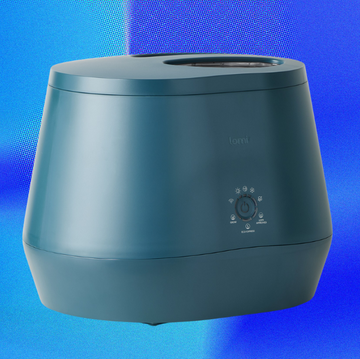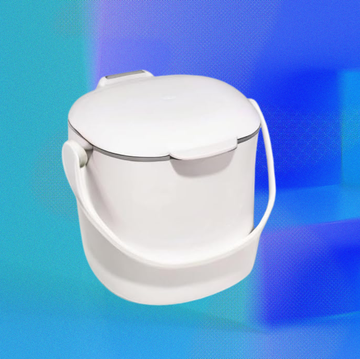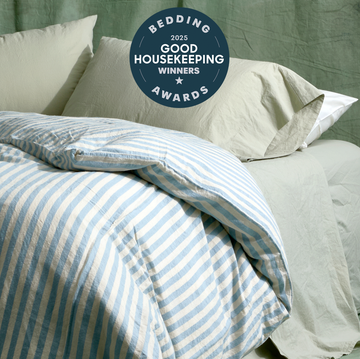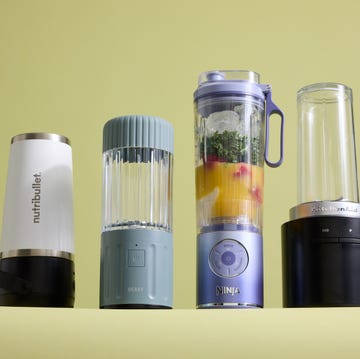My mom has composted for as long as I can remember, but she also had the yard space for a compost pile. I’ve always wanted to follow her lead, but for the past decade I’ve lived in apartments and townhouses where “outdoor space” meant squeezing two chairs onto a balcony—if that. So why the obsession? I earned a B.S. in Food Studies, Nutrition, and Public Health from New York University, where I learned SO much about food waste and how much actually ends up in our landfills.
According to the USDA, "food waste makes up an estimated 30 to 40% of the U.S. food supply." Food waste is, unfortunately, inevitable. You can meal‑plan and use every last scrap, but no one is perfect. And until recently, I thought composting was the only way to keep food waste out of landfills, and as an urban dweller, it felt out of reach.
That changed in 2023, when I was introduced to the Mill food recycler and promptly became a little obsessed. The Mill isn’t a composter per se because it doesn’t produce traditional compost; it's a home food recycler that turns kitchen scraps into soil amendment or chicken feed in hours. Still intrigued? Read on for my full review of this pricey (it retails for $999!) but powerful kitchen appliance.
What is the Mill food recycler?
Mill was founded in 2020 by Matt Rogers and Harry Tannenbaum, who had previously worked together at Nest, where they contributed to the development of smart home products. The duo developed Mill to help "outsmart" food waste. It's a rather large, but sleek appliance that resembles a kitchen trash can. It's designed to be stored on your kitchen floor and features a foot pedal to open the lid for easy disposal.
The food recycler is designed to be connected to the Mill app, where you can schedule how often your appliance recycles your food scraps, while also monitoring your impact on reducing food waste. According to Mill, "To date [June 26, 2025], households and workplaces using Mill have kept nearly 10 million pounds of wasted food out of landfills."
This kitchen appliance handles the usual compostables, including fruit, vegetables, and coffee grounds, as well as non-compostable scraps such as meat, dairy, and poultry and fish bones. Its dry-and-grind cycle turns everything into compact, low-odor food grounds. You can mix those grounds into a home compost pile, add them to your curbside organics bin (where accepted), or feed them to your backyard chickens (if you have them). However, what really won me over as an urban dweller is Mill's pickup program: You can ship away your food grounds and they'll turn them into chicken feed—diverting food waste from landfills without the hassle of a traditional compost setup.
How does the Mill work?
- Add your food scraps: Everything from avocado pits to turkey bones (read on for more details) can be added to the bin inside your Mill.
- You can control when it runs: The Mill has a built-in sensor that detects how much you've added each day and processes it based on your food scraps' moisture level and your schedule, controlled through the app.
- Dry and grind cycle: During the dry and grind cycle, the Mill dries and breaks down scraps into dry, odorless food grounds (reducing volume by about 80%, according to Mill). It achieves this with two stainless-steel augers that break down scraps into smaller pieces, while gentle heat and airflow evaporate moisture, and the built-in charcoal filter captures odors.
- Empty the grounds: Depending on how often you use the bin, it typically needs to be emptied monthly.
- Use the grounds: Nourish your garden or lawn, make feed for backyard chickens, add to curbside compost, or send grounds through Mill's pickup program.
How we tested the Mill in the Lab and at home
In the Good Housekeeping Institute's Kitchen Appliances and Innovation Lab, we've tested over a dozen electric and non-electric composters and food recyclers. For all models, we assess material, size, ease of use, and type of seal and filter, when applicable. We also consider whether the bins were designed to control odor and resist pests. We also put each model to the test at home to best approximate the frequency and variety of home use. We also test models in our Lab, as we have a lot of food scraps after a long day of testing kitchen appliances. We focus on food scraps and household waste, rather than yard trimmings, in our testing.
We put the Mill (or Milldred or Milly, as I like to call it) to the test in our Lab for almost two years before writing this review. My colleague and I also tested the Mill in our home kitchens for over a month. We evaluated how easy the Mill was to set up and operate daily, monitored sound levels, and assessed whether the built-in filter was effective. We also evaluated the app and food ground pickup service.
Testing results
- Performance: Through testing, I've found the Mill food recycler to be highly effective in breaking down food waste. I've added cooked and raw chicken, peach, cherry, and avocado pits, the rind of a whole watermelon, lots of bread, forgotten leftovers, old, dried-out cheddar, corn cobs, stale crackers, and more. I run the Mill in the Lab and at home every night, and by morning, the scraps are almost always reduced to fine, dry grounds.
- Odor: If you open the bin, you'll notice a light, coffee grounds‑like smell, but the built‑in filter has done a great job controlling odors. "I had some trouble with odors at first, but I realized that I didn't take both stickers off of the charcoal cartridge," says Kitchen Appliances and Innovation Lab Director Nicole Papantoniou. The Mill arrives with several stickers, so be sure to remove them all before first use.
- Noise level: I recommend scheduling Mill to run while you're asleep. It's a bit noisy, and you shouldn't add scraps while the dry and grind cycle is running because it can accidentally pause or jam the system. The safety features are solid: you can lock the appliance remotely through the app, which is especially useful during the dry and grind cycle, as it can get hot. Heads‑up, the lock makes a sharp, surprising click, mine auto‑locks at 10 p.m., and it startles me almost every night.
- Ease of use: We also appreciate the foot pedal for opening the appliance, which helps keep the lid cleaner than if you had to open it with your hands covered in dirty food scraps. "The opening is also nice and wide, so you don't have to worry about your food scraps spilling everywhere," says Papantoniou. "It has a large capacity and doesn't need to be emptied often. I also like how it mills the food when you put it in and only runs when it senses there is new food in there."
What can and cannot go into the Mill?
The Mill app features a handy food library that you can reference whenever you're unsure about adding something to your Mill. Trust me, I use it all the time. Here's my quick guide for navigating the Mill:
- Fruits and vegetables: Most fruits and veggie scraps can go inside your Mill, except for artichoke stalks and stems and corn husks, which are very fibrous.
- Animal proteins: All meat, poultry, and seafood can be added (both raw and cooked), except for hard shells or larger bones from beef or pork.
- Breads and grains: The majority of grains can be added, but you must use caution with sugar-laden ingredients like desserts and baked goods, as they can clog the appliance.
- Nuts, beans, seeds, spices, and herbs: All of these can be added to the Mill.
- Dairy and eggs: Most can be added, but it's recommended to strain off any liquid, as it will be harder for your food scraps to dry.
- Fat, grease, and oil: Any fat or oil cannot be added because they can clump up and create a jam in the Mill.
- Garden and yard waste: Only edible ingredients can be added, so most plants and yard waste cannot be added.
- Tableware and packaging: It's best not to add any paper goods or packaging to your Mill, except for 100% paper coffee filters.
- Pet and household items: Select items like dog and cat food and treats can be added, but that's about it.
The bottom line: Is the Mill Food Recycler worth it?
The Mill is best suited for people want to reduce food waste and can afford the $999 price tag—especially those with larger kitchens and some available floor space. You can rent or finance it, and there are occasional sales; however, if it were more affordable, I’d recommend it more broadly. It’s on the larger side, yet it lives on the floor rather than the counter—great if you prefer clear countertops and don’t mind another trash‑can‑style appliance. I love using Mill: Little to no food goes in my trash (goodbye, smelly bin), and the whole experience of testing has been seamless.
Why trust Good Housekeeping?
Eva Bleyer is the reviews analyst in the Good Housekeeping Institute's Kitchen Appliances and Innovation Lab. She has tested all kinds of kitchen gear for GH for almost four years, including gas ranges, microwaves, and blenders. She holds a B.S. in Food Studies, Nutrition, and Public Health from New York University, where she studied sustainability practices. Eva has tested a few different electric and non-electric compost bins in her home and in the Lab and grew up in a household that composted regularly. She has tested two versions of the Mill in the last two years in the Lab and for the last month has tested it in her home as well.
Eva (she/her) is a reviews analyst in the Kitchen Appliances and Innovation Lab, where she tests kitchen gear, home appliances and culinary innovations. She graduated from NYU with a bachelor of science in food studies, nutrition and public health and is a trained chef through the Natural Gourmet Institute. Eva has more than 10 years of experience in the food industry, working as a food stylist, personal chef and marketing manager.






















